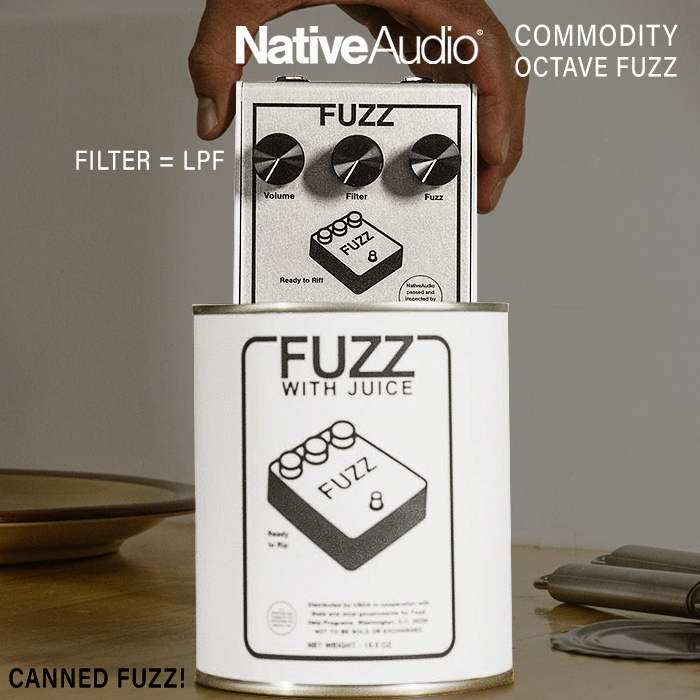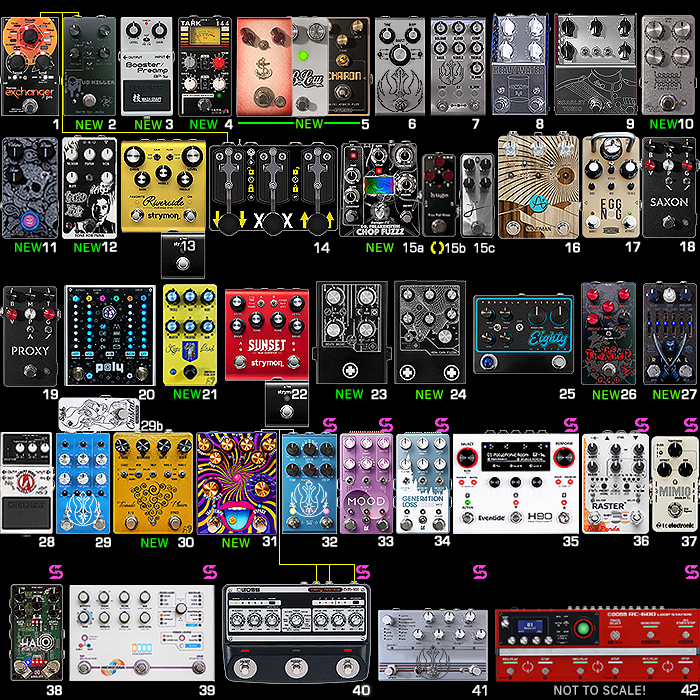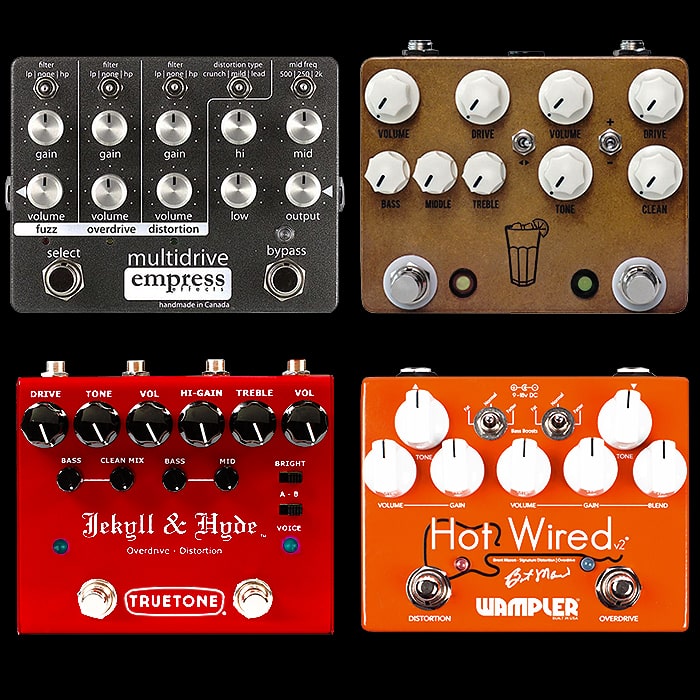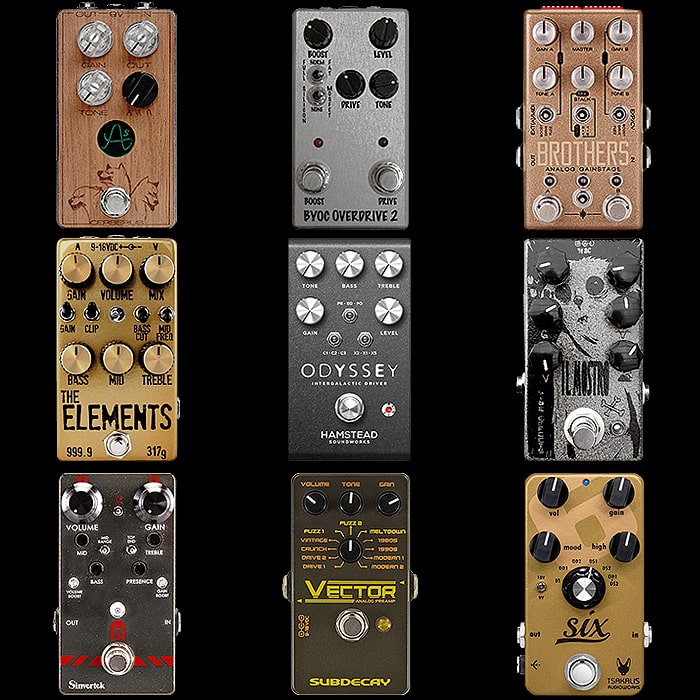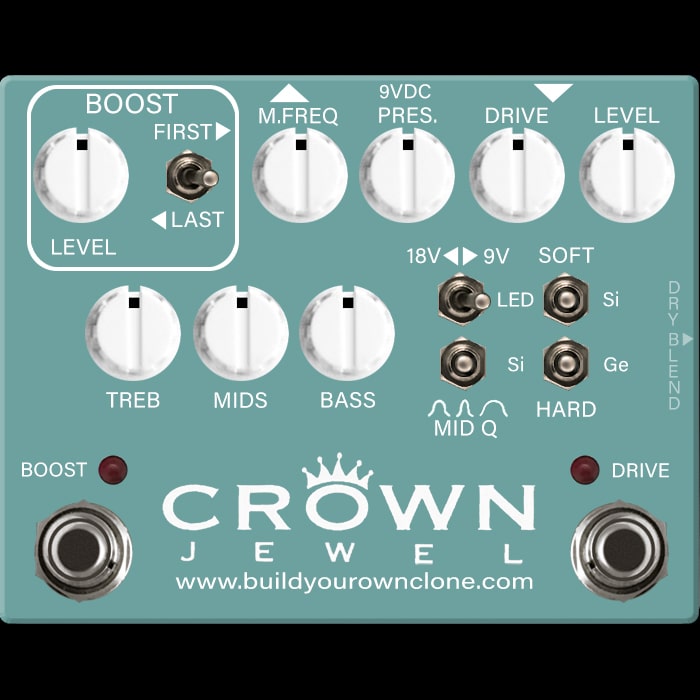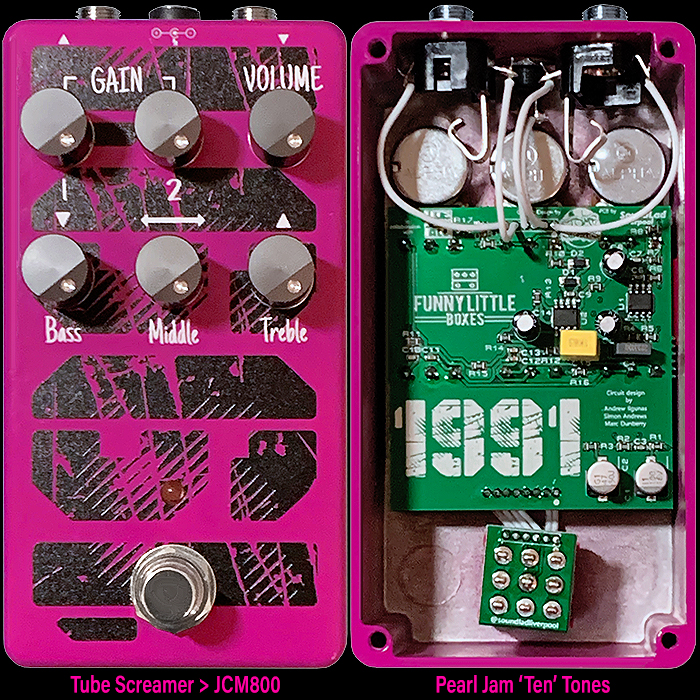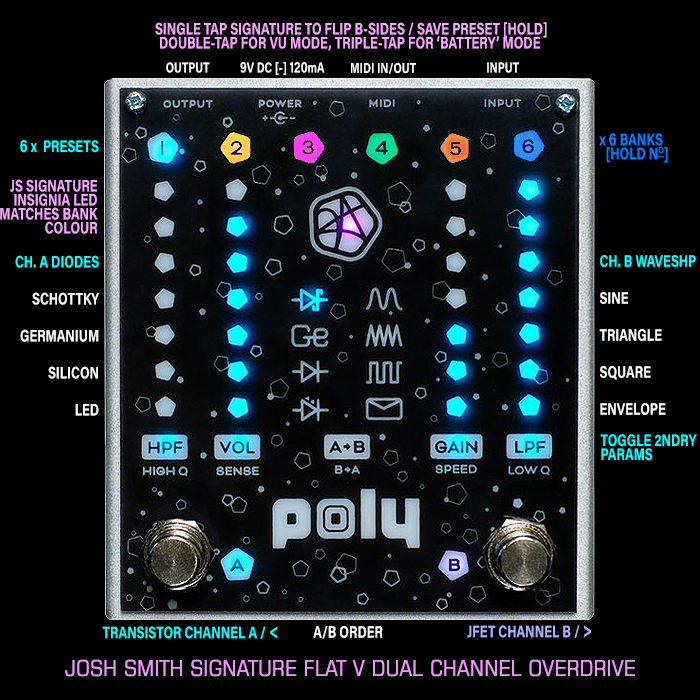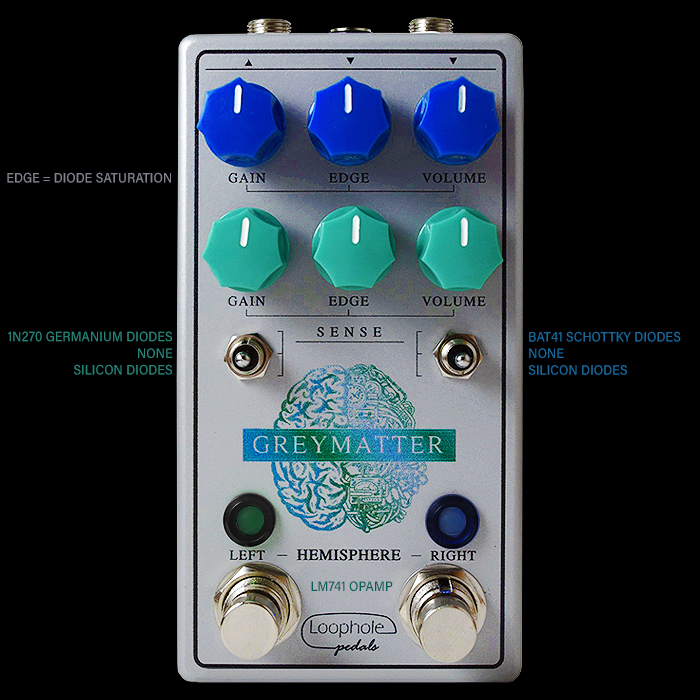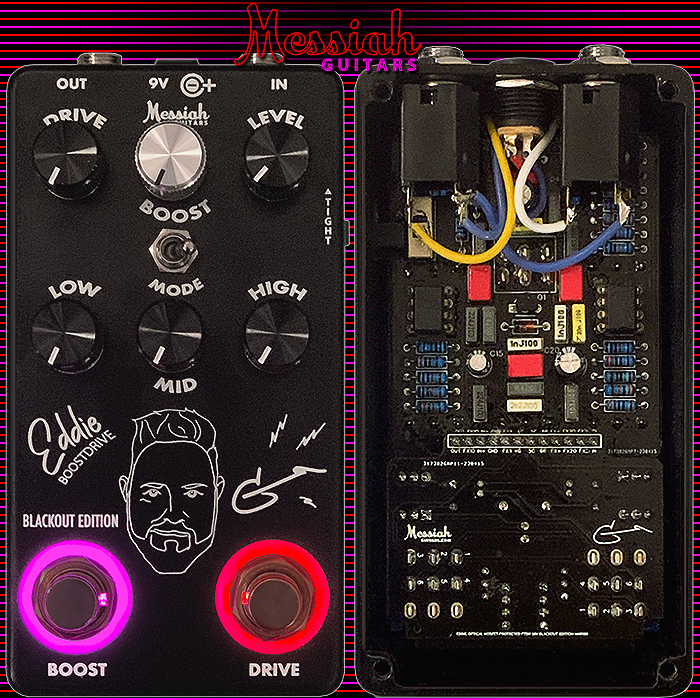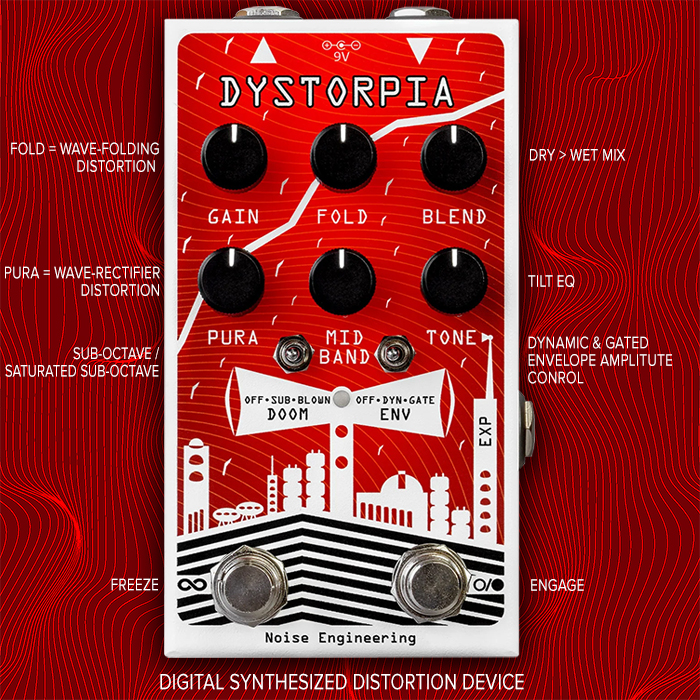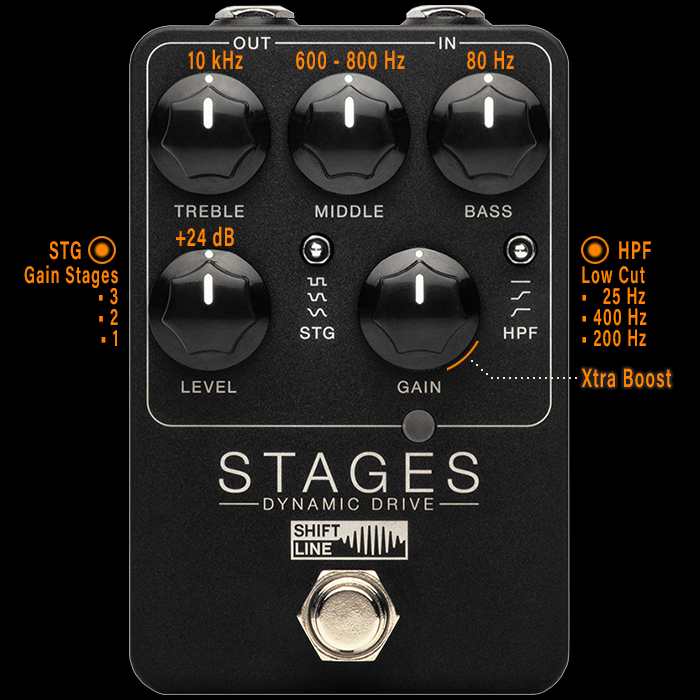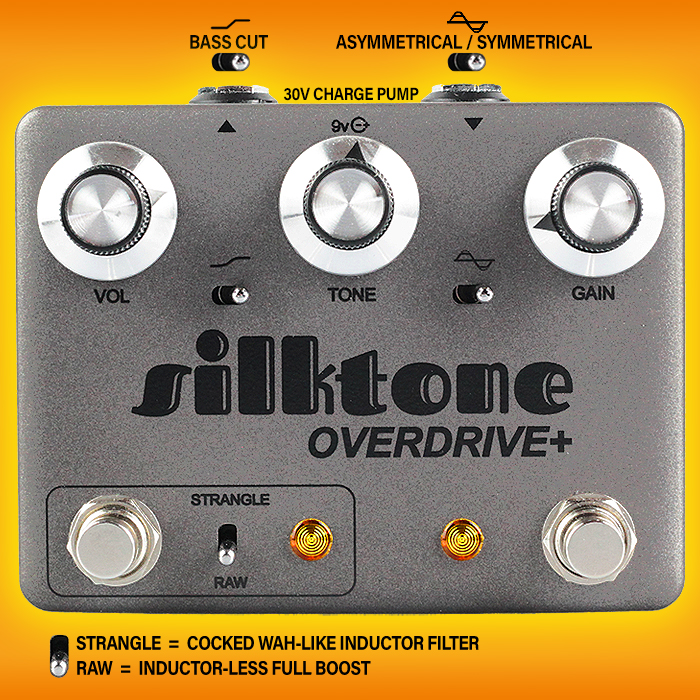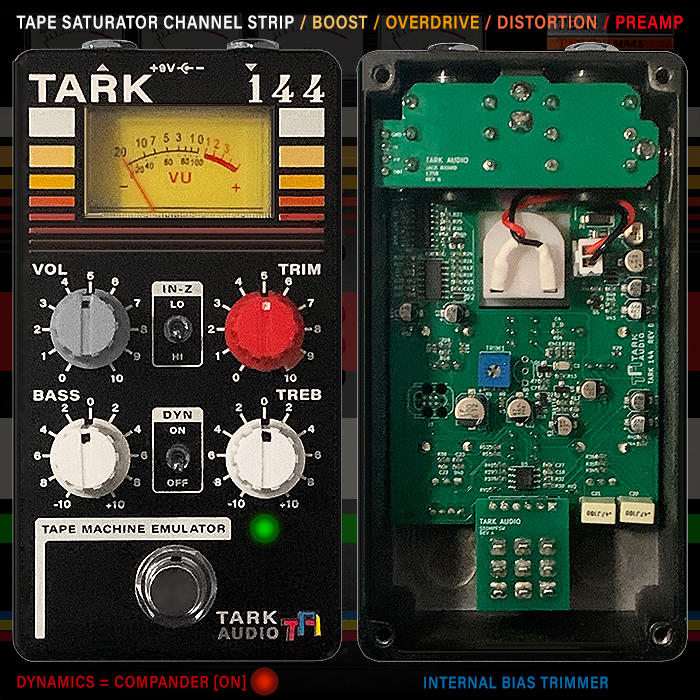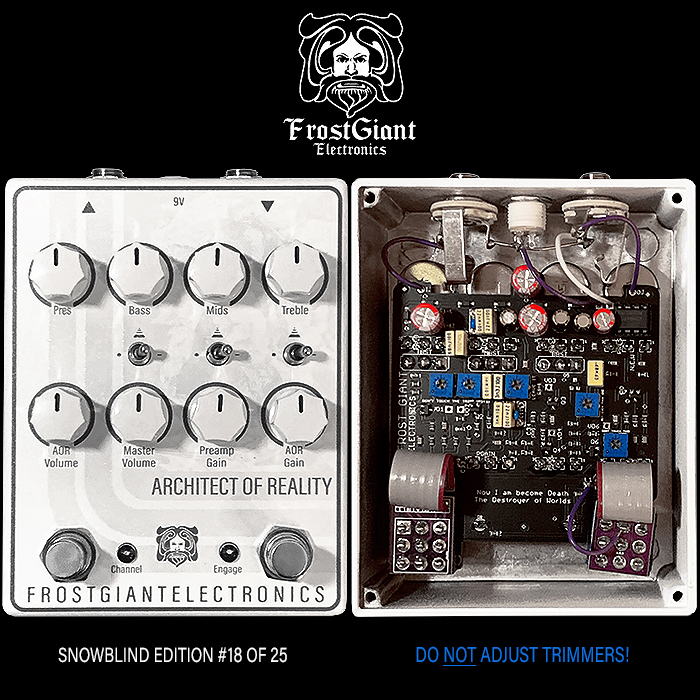Tone For Punk's Trebled Youth 3-Stage Gain Machine is a Genius All-Rounder Boost, Overdrive, Distortion and Fuzz even

When I first heard the demos for the Trebled Youth I really loved the somewhat raw punky garage rock tones I was hearing. While the makeup of this pedal is so versatile that you can turn it to almost any purpose - I guess apart from proper High Gain.
It covers pretty much the full gamut of gain right up the scale - and the 3 gain knobs interact with each other in increasingly interesting ways.
If you turn down Push, Riff and Raff and leave the Slash EQ in the middle - you are pretty much at clean boost state and riding the Volume knob will push that up further - but with minimal colouring.
Tone For Punk’s Müs describes the 3 Gain Stages - PUSH, RIFF and RAFF per the following summaries :
- PUSH - Determines how much of the first gain stage you want to feed into the rest of the circuit
- RIFF - Gain 1 control : has somewhat more mellower range than RAFF / Gain 2
- RAFF - Gain 2 control : distorts generously when used on its own
He told me he considers PUSH to be kind of like the Intensity of the circuit, RIFF is the core Texture, and RAFF is kind of the Body of the overall gain structure.
I’ve essentially come up with 3 different descriptions of the knobs which yield further details on their use / impact :
Controls - Slash (EQ), Push (Gain 1 Feed / Mix), Volume, Riff (Gain 1), Clipping / Diodes : Symmetric Silicon / Asymmetric Germanium, Raff (Gain 2).
Alternatively - Bass > Treble EQ, Boost, Output, Overdrive, Clipping, Distortion.
Or even - EQ Blend, Intensity, Level, Texture, Character, Body.
Note that SLASH (EQ / Range) + PUSH together essentially form a classic RangeMaster / Treble Booster - with the Slash at Max. That then feeds into the other 2 Riff and Raff gain stages - and is a big source of this pedal’s potency and prowess!

While I've latterly come do think of PUSH, RIFF and RAFF, largely just as BOOST, OVERDRIVE and DISTORTION. You can use each of the controls individually and independently, you can combine them in pairs, or use all 3 together for a total blow-out sort of fuzzy sound.
Where the really interesting parts are all the inbetween settings. Each of those knobs engages very interactively and you get different textures - courtesy of how much compression you bring to the circuit, and how much overall gain, and in what stages - also each Gain Stage has somewhat different textures and subtleties in EQ profiles.
Then on top of all of that you have the option of Symmetrical Silicon or Asymmetrical Germanium Clipping - which gives you vastly different core character voicings. The Silicon being cooler / darker and more searing, and the Germanium warmer and more open with its signature soft-ish grit.
You can literally get lost in this pedal for days - it's kind of the 'Fuzz Factory' of Overdrives really if I were coming up with a suitable analogy. And like that pedal it requires some patience and due diligences to figure out exactly how all the controls interact with each other - would probably be cool to have a Block Diagram just to see exactly how the circuit works - to give you better insights on its use.
At a basic level though simply think of the PUSH, RIFF and RAFF as sort of being 3 Gain Stages - or BOOST, OVERDRIVE and DISTORTION - which you choose how to combine.
Müs suggests some cool presets to which I have added some of my own notes and additions!
CLASSIC TREBLE BOOST : Slash @ Max, Push @ a fraction (say 7.30 o'c!), Volume to taste, Riff @ c. 1 o'c, Raff @ Min.
FAST / LIGHT DISTORTION : Slash @ 10 o'c to 1 o'c, Push just below noon, Volume to Taste, Riff & Raff @ around noon.
BLOW-OUT FUZZ : Everything @ Max, Silicon Clipping - one of my favourite settings!
GPX Bonus Drive! : Slash @ noon, Push @ 3 o'c, Volume @ Max, Riff at 3 o'c, Germanium Clipping, Raff @ 9 o'c.
Those 4 settings should give you an idea of the vast range of the pedal - where you can use your guitar volume knob to roll off some of the gain too - depending on how full-fat you've gone!
This overdrive can for sure do those punky garage rock tones - but perhaps that labelling does if overall a alight disservice as it has such incredible range - this is one of the most granular gain pedal I've encountered and one of my very favourites for that reason. Just really potent and so versatile.
This isn't just Tone For Punk - this is Tones for Days!
Demos
















